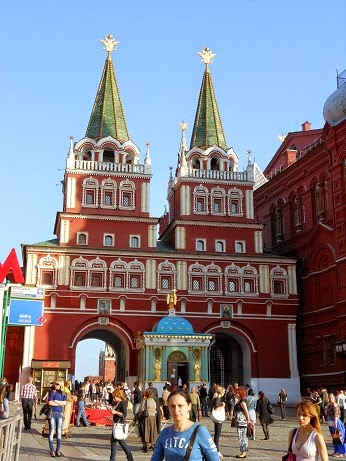 |
| Gospodnya |
saw all sorts of churches, synagogues, mosques, and temples.
 |
| Georgiva |
Saint Basil’s Cathedral doesn’t follow any of these rules. The Cathedral complex was
 |
| Art in Saint Basil's Cathedral |
Some of the most beautiful churches are on the grounds of the Kremlin. There are six churches within these grounds and when you see them all in one day, it’s very confusing
 |
| Cathedral of the Annunciation |
 |
| Cathedral of the Assumption |
There is no doubt that the Cathedral of the Archangel was designed by Italian architect, Alionzo Lamberti da Montanyano, (Alevisio Novi in Russian). Overlaying
 |
| Cathedral of the Archangel |
 |
| Church of the Disposition of the Robe |
The Cathedral of the Twelve Apostles is part the Patriarch's Palace, built by Patriarch Nikon (1652 - 1658). Although the atrium of the church led directly to the Patriarch's stone cell, the Cathedral was the grand entrance to the Palace which rivaled the Terem Palace in affluence and extravagance. The outside of the Cathedral is rather plain, but inside there is a five-tiered iconostasis along with 12th Century images of Peter and Paul.
 |
| Cathedral of the Twelve Apostles |
 |
| Church of the Nativity |
The Cathedral of Christ the Savior has several remarkable stories associated with it and while all are basically the same, it’s the details that lend interest. One thing you notice when you enter an Orthodox Church is that there are no
 |
| Cathedral of Christ the Savior |
 |
| One of the Seven Sisters |
 |
| Blue topped chapel at entrance to Red Square |
There are many other very cool churches in Moscow that visitors are welcome to see. You must, however, remain quiet, cover your head if you’re female, and only take photos if you ask permission.
©2013 NearNormal Design and Production Studio - All rights including copyright of photographs and designs, as well as intellectual rights are reserved.
No comments:
Post a Comment